Website sections:
Current section's content:
- You Can Manage and Program Creativity
- Creative Abilities and Creative Thinking Skills Management
- Briefly About CreativityModel Method Usage
- CreativityModel Method Usage Opportunities and End-User License Agreement
- Current Version of CreativityModel Method
- CreativityModel Method Abstract
- CreativityModel Method Version Changes
- CreativityModel Method Glossary
- Explanation of the Method's Component Parts and How the Component Parts Interact
- Explanation of How the Method's User Achieves Results
- CreativityModel Method - Generate Dots, Connect the Dots
- CreativityModel Method Usage Areas
- The Artist in You
- Growth of the Artist in You
- The Result Getter in You
- Applying the Result Getter in You
- About Choice Supported Creativity Usage
- The Problematic Side of Business Creativity
- Creativity Management and Business Creativity
- Sales CRM Software Development Example
- Why Does Creativity Management Matter and What Can You Do About This?
- Goal Oriented Creativity Management and CreativityModel Method
- Goal Oriented Creativity Management and Your Personal and Professional Life
- Teenager, Version 1 - Confusion
- Teenager, Version 2 - Career Development and Life Management
- Managers, Version 1 - Zigzagging Business Development
- Managers, Version 2 - Innovation Management and New Product and Service Development
- The President, Version 1 - Some of It Did Happen
- The President, Version 2 - Self-Expression, Conflict Resolution, Creativity and Leadership
- CreativityModel Method Development Background
- Further Development of CreativityModel Method
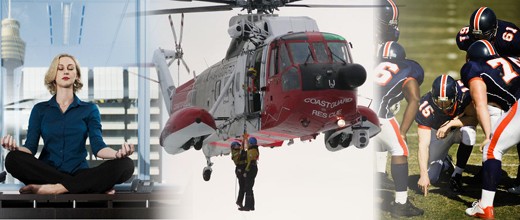





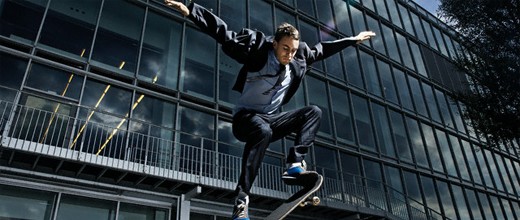


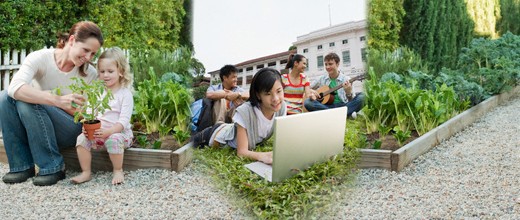
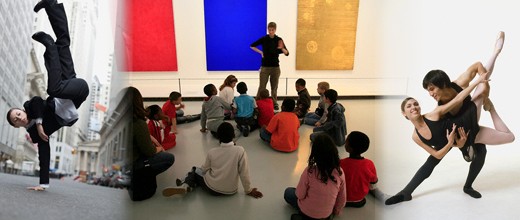
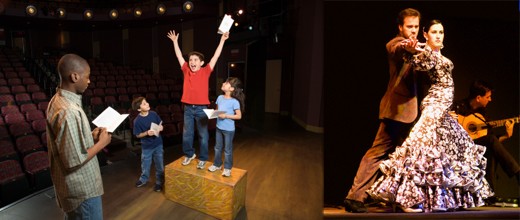


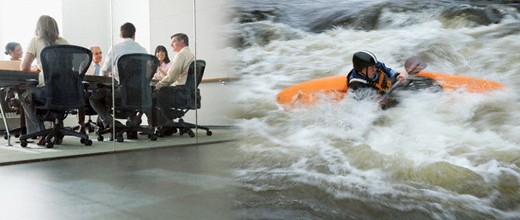





Explanation of How the Method's User Achieves Results
Current Version of CreativityModel Method
- CreativityModel Method Abstract
- CreativityModel Method Version Changes
- CreativityModel Method Glossary
- Explanation of the Method's Component Parts and How the Component Parts Interact
- Explanation of How the Method's User Achieves Results
- Usage Opportunities and End-User License Agreement section contains CreativityModel Method usage license information, explanations of how you can use this Method, and a link to a PDF version of this Method that you can save, read offline and distribute, if you wish to do so.
Current Part's Contents
- This subsection continues from where the previous subsection, Explanation of the Method's Component Parts and How the Component Parts Interact, left off.
- Project Development Approaches
- Choice Supported Creative Approach
- From Randomly Created Fragments to Theme Based Selection of Content
- Choice Supported Development Processes
- Working With Restrictions
- Pooling
- Comparison and Criteria
- Moving Vertically For the Sake of Quality
- Focus More on Producing Than On Evaluating
- Find the Balances
- Explore and Discover, Express Yourself and Enrich Your Life
- Goal Oriented Creative Approach
- Why Do We Need This?
- Goal Oriented Creativity in a Nutshell
- Goal Oriented But Flexible Creativity Management
- CreativityModel Method and Project Management
- CreativityModel Method and Planning
- Planning, Probability and Risk
- On the Importance of Implementation
- Flexible Usage of Alternative Goals
- How Much Planning Should You Do?
- Planning as Insurance
- Find the Balances
- Accomplish Your Best
- Project Development Stages
- The Initial Stage
- Creativity Management Approaches
- External Devices
- Modifications
- Connecting Elements
- The Initial Stage Completion Criteria
- The Production and Connection Stage
- Movement of Project Development Focus to the Previous Stage
- Stage Development Process
- The Production and Connection Stage Completion Criteria
- The Wrap-up Stage
- Movement of Project Development Focus to the Previous Stage
- The Wrap-up Stage and Project Completion Criteria
- Pooling and Project Development Stages
- Additional Functionality Units
Project Development Approaches
This CreativityModel Method version contains two main project development approaches, Choice Supported Creative Approach and Goal Oriented Creative Approach. These approaches can be used in any combination necessary throughout the project development process, but as CreativityModel Method user, for each project you should select one of the two as the primary approach for the development of the project's structure.
- If there is no need to set and achieve goals as the project's outcome and completion point or step, and especially if artistic qualities of the outcome are important, you may prefer to use the Choice Supported Creative Approach principles for the development of the project's structure.
- If objectives or goals need to be achieved with the project development processes, you should most likely use the Goal Oriented Creative Approach principles for the development of the project's structure.
So, you should select the approach that is more appropriate in your opinion for the development of project structure.
Choice Supported Creative Approach is expressive in nature and offers a lot of flexibility for putting together the outcome.
The project development process is primarily forward moving by nature, that is, both project planning and implementation of the plan occur from the currently developed or selected structural parts and components forward toward the completion of the project.
Addition of structural parts and components can be largely based on your preferences. That is, you can develop the project further by building its content based on your choices and preferences.
You can do as much or as little planning as you find necessary.
During each project development stage and substage project planning and the implementation of the plan can be separated from each other, or the two can occur practically simultaneously. Similarly, any solution in between separating and merging the project planning and implementation processes can be used as well.
Goal Oriented Creative Approach is about setting and achieving goals and generating qualitatively appealing solutions in the process.
The project development process is backward moving by nature in the project planning stage, so that the movement occurs from the project completion point toward the starting point. Additional project structural parts and components should be generated and added primarily so that they support each other and achievement of project's goals. This makes goal oriented creativity usage a more restrictive process than choice supported creativity usage is.
Implementation of the project plan occurs from the currently developed or selected structural part or component forward toward the completion of the plan.
Choice Supported Creative Approach
Choice Supported Creative Approach is best suited for instances where artistic or otherwise imaginative qualities of the outcome are more important than is achieving specific goals with the project's outcome.
Choice supported creativity usage is about building project's structure and content around its theme. Pooling and comparing different alternatives can help to increase the quality of the outcome of these processes.
At the core are these steps:
- Create one or more sets (pools) of components and, as necessary, also structural parts and theme.
- Develop further and connect the elements in different ways.
- Evaluate the results.
- Choose the combinations that express the project's theme in the best way or the project participants otherwise like the best, and also confirms to any project-specific rules and restrictions that the project participants decide to follow.
- Discard the elements that are not going to be used.
CreativityModel Method user can start the project development process by working on any project element and can move flexibly between the project development stages as needed, using his or her preferences for generating and selecting project's content. Project development stages and completion requirements do apply, but personal preferences influence these aspects of project development, too.
From Randomly Created Fragments to Theme Based Selection of Content
A project can be started in different ways - for example, by first identifying its theme, then parts of its structure and then some or most of the components. Similarly, a project can be started by identifying first just one or more components, or a portion of the structure.
Further, any element can be started as a sketch, a fragment, that is developed further during one or more sessions.
The initially built elements can, but do not necessarily have to be closely related to each other, especially, if they are created during the Initial Stage. Using project's theme and structure, during the Production and Connection Stage and the Wrap-up Stage the necessary components are selected and connected (for example, if writing is involved, sentences and paragraphs are put in the suitable order).
Choice Supported Development Processes
A person who is using choice supported creativity can choose at any project development point how to proceed from that point onward.
This may mean a lot of freedom of movement.
This may also mean that lots of decisions have to be made. Choice supported creativity user does not know ahead of time what all the alternatives are that he or she will deal with.
Results have to be generated, selected and assembled and the relevant decisions have to be made step by step, based on how the choice supported creativity user sees, interprets and perceives each of the situations and the available project elements and the project development alternatives.
- Choice supported creativity user can do a substantial portion of the project planning in the beginning of the project development processes by establishing project's theme and structure. Structure can then be filled with the components so, that the final outcome is bound by the project's theme.
- Project can be developed further using the theme or structure, or both the theme and structure.
- Project's structure can be developed further within the existing structure, or in a new direction.
- Additional components can be added by proceeding logically or emotionally, or by using comparison or contrast, similarities or opposites to the existing components.
- A component can be selected, its characteristics can be evaluated and based on the outcome the component can be connected with other components differently than before.
- Choice supported creativity user can also proceed without prior planning and without establishing an explicit structure for the project, by adding any kinds of structural parts and components, and by developing the project further from any component in any chosen direction.
- This process can occur with or without having a theme for the project. Project's theme can be established later, so that it reflects the project's content and meaning. Further, a project may not have an explicitly established theme at all. However, if a coherent outcome is desired, project development stages and the relevant principles should be followed.
Working With Restrictions
CreativityModel Method user's abilities, experience and expertise sets boundaries to what can be achieved.
Research (including Internet-based searches) and working with others can be helpful here.
Similarly, physical and working conditions, tools that are being used or are not, but could be used, and additional external conditions like, for example, time of the day may influence CreativityModel Method user's ability to develop a project further.
Project specific rules may restrict the number of available alternatives. In some instances, such rules are a matters of perception or interpretation.
Habits, values or beliefs may also influence CreativityModel Method user's ability to develop a project further.
It may be up to CreativityModel Method user to change such restrictions.
Further, project's theme and existing structure may put restrictions on which alternatives can be used.
Project's structure and even theme can be changed, but that means that all the already selected components should be reviewed for compatibility with the newly established theme and structure.
Pooling
Pooling, or element pooling is the process of creating and gathering together groups of alternative elements and solutions.
Pooling usually increases the number and the qualitative nature of the available options. Further, pooling can be used without having to make any substantial changes to the project's theme and structure. Thus, pooling can help to find ways around restrictions that apply to a project.
Because Choice Supported Creative Approach is less restrictive than Goal Oriented Creative Approach is, pooling is especially applicable when choice supported creativity is used. However, pooling can be used with goal oriented creativity as well.
Comparison and Criteria
Qualities make sense in comparison, especially, if you have a clearly established criteria for evaluating the alternatives. Clearly established criteria helps you to identify, what it is that you are looking for. If you don't have such criteria, establish it when you do pooling or otherwise have more than one alternative to work with. Even if the criteria that you use is less than perfect, when you deal with alternatives, most likely having it is more helpful than is not having any criteria for comparison. The latter situation can create a feeling of information overload and can be overwhelming.
So, when you can compare different alternatives, you can more easily pick out the best suited options. This principle applies to different aspects of project development.
You can generate alternative elements and compare the alternatives. Further, you can duplicate the entire project's content, so that the duplicated content can be further developed differently from the original content. This step is optional and enables the development of alternative solutions for the entire project. You can create alternative solutions, compare them and use only the solution that best fits your needs.
Moving Vertically For the Sake of Quality
When one element is created after another - for example, when one component is created after another - the project development process is vertically moving. During pooling the development process is horizontally moving, which means that alternatives to the existing elements are being created. This may slow down the pace of project development, but the upside is that it helps to improve the quality of the outcome.
In contrast, if one element is created after another without creating and storing alternative elements, there is little base for evaluating the quality of the outcome. Comparison, on the other hand, can make it easier to determine what components and solutions are preferable, which in turn can help to improve the quality of the outcome.
Focus More on Producing Than On Evaluating
It is advisable not to evaluate the quality and the compatibility of the structural storyline parts and particularly the components while pooling them. The quality of the components, and therefore the final outcome, depend largely on the spontaneity of the element pooling process. Unique solutions can be found by pooling loosely related or even largely unrelated components and then connecting them through the elements characteristics so, that the solution is related to the project's theme. During the Production and Connection Stage and the Wrap-up Stage, the pooled structural storyline parts and components should be connected under a specific theme and/or goals, if goals have been established. Throughout the latter process, meaning is given to solutions containing elements that may have been unrelated initially, but are related by a common theme and/or goals before completing the project.
Accordingly, during each element pooling process, CreativityModel Method user should not worry about how well the pieces fit together. Evaluating the compatibility of the pooled components should be done separately and, in most instances, after the pooling process has been completed.
Find the Balances
Pooling can be used for creating alternative components and other elements. Parts of a project, or an entire project can be duplicated and modified as needed.
The more relations are involved between the alternatives, the more complex does the project development processes get. Computer usage can be helpful in this process.
Whatever is used for storing and working with the alternative sets of elements, CreativityModel Method user should choose the level of complexity that he or she is comfortable with and helps to achieve the needed results at the necessary pace.
Explore and Discover, Express Yourself and Enrich Your Life
So, what should you do with all the choices that you can generate when you are using choice supported creativity?
Explore the subject matters that you deal with.
Discover, what matters.
Express yourself.
Generate pools of alternative elements and from them assemble solutions that convey what you want to say, the way you want to say it.
Sometimes you may know ahead of time what and how you want to say. Only relatively minor testing of different alternatives, rearrangement of components within structural parts and the structural parts themselves may be necessary. At other times, it may be the other way around and pooling can help you to discover what it is that you really want to say with what you do.
Do pooling also for knowing more and experiencing more. Enriching your life, so that you can enrich the life of others.
Goal Oriented Creative Approach
Life is full of situations where achieving something specific is more important than are the artistic qualities of the outcome. Many such situations, personal and professional, require also creativity usage.
Goal oriented creativity does not offer solutions for all such situations. Most of these situations require a combination of goal oriented creativity and choice supported creativity usage. Being able to use the two approaches separately helps to master both of them in different types of combinations as well.
Why Do We Need This?
Choice Supported Creative Approach doesn't work very well when objectives or goals need to be achieved. When you use choice supported creativity, you don't know which path will take you to your project's completion point most effectively and efficiently. You may not even know what your project's completion point is and how you will get there. You may go for a while in one direction with the project development and then in another, and so on, trying and testing different alternatives. Each such project development part means usage of resources - time, energy, and other inputs. This can work well, when artistic qualities matter the most and the needed resources are available, but it can cause substantial trouble when goals need to be achieved effectively and efficiently.
If you try to achieve goals this way, you may be taking the long way round. Perhaps you will achieve your objectives only partially, perhaps not at all, but it is very likely that you will use more resources in the process than is necessary.
Further, usage of choice supported creativity in situations when goal oriented creativity needs to be used may lead to wrong decisions, waste of resources and may lower the quality of the outcome.
People can make the mistake of using choice supported creativity in situations where goal oriented creativity should be used in their personal and professional lives.
In personal life this may lead to talent and opportunities lost, life that is less than fulfilling and may seem not to be going anywhere, or is perceived to be pointless and senseless.
In professional life and especially on the management level misusage of the two creativity approaches described here can affect a larger number of people. The bigger is the person's professional sphere of influence who is using the two approaches incorrectly, the more people are affected by the ripple effects of the negative outcomes.
Project, company and organizational management are all influences by this phenomenon. In business and organizational life management problems may mean embarrassment, adverse effects on people's career development, and decrease or loss of income. In politics and other public policy areas where people's lives are more literally involved, things may get even worse.
Briefly, when goals are declared, but are not pursued in a goal oriented manner, and instead decisions are made using choice supported creativity principles, trouble ensues. Additional and often unpredictable problems tend to emerge that require substantial amounts of problem fixing related resources and generate other adverse effects.
These patterns seem to be working with high degree of regularity and predictability - like a law of human behavior.
So, we should investigate and address these topics, and learn what we need to learn in order to make better decisions in the future.
Goal Oriented Creativity in a Nutshell
The basic structure of the Goal Oriented Creative Approach is relatively simple. Do the planning by establishing the goals, then, moving backwards, establish that structural part that precedes the goals, then the structural part before that. Add components as applicable. Working this way move to the beginning of the project and establish all the structural parts from completion to the beginning of the project.
Implementation takes place by moving forward from the beginning towards the completion of the project. During the implementation, as applicable, fill the project with the rest of the components, using combinations of goal oriented creativity and choice supported creativity.
So, if Part Z is the final part of the project, where the goals are being achieved, what is our project's Part Y that precedes Part Z? What comes right before achieving the goals and is necessary for achievement of the goals?
What is our Part X that comes before Part Y?
Figure the parts out this way. Do research as necessary, and when applicable get input from the experts and use team efforts. Then implement the plan from the beginning to completion (achievement of goals), that is, from X to Y to Z.
The natural tendency may be to start listing project's structural parts in a random order by figuring out what needs to happen before the goals are achieved, and then order the structural parts from start to completion. Be careful about this - when you proceed this way, you are not using goal oriented creativity. By proceeding this way you may unknowingly go astray and start moving not towards achievement of goals, but towards other objectives that came up during the project planning process. So, make sure that you also do the project planning in the goal oriented manner as well, by figuring out the preceding structural parts one by one.
Goal Oriented But Flexible Creativity Management
For goal setting, and the qualities of the goals, you can use whatever principles you find to be appropriate. Different views exist in this area, which is beyond the scope of the current version of CreativityModel Method. However, if you want to foster creativity, you may want to consider building flexibility into the project's goals.
In a way, Goal Oriented Creative Approach usage makes project development easier. When you have the goals established, it means that you know what you need to achieve. Based on the goals and the project's starting point, you can put together the project's structure that you then fill with the components. That planning part and the structure that you put together help to reach the goals.
That's more-or-less the big picture. However, details make this creative approach more difficult to use.
When you use goal oriented creativity, you need to deal with several complicating factors: other aspects of project management, risk and balancing acts. The best solutions can be found by
- putting together project's structure that is as comprehensive as you deem necessary,
- allocating sufficient resources towards project implementation, and
- leaving as much room for flexibility during the implementation as possible.
These goal oriented creativity usage characteristics are further discussed below.
CreativityModel Method and Project Management
Goal oriented creativity usage is only one aspect of creativity management, and creativity management is only one aspect of project management, which is a much broader concept. For our purposes this means that good quality outcomes usually require that many parts work well together, which in turn requires balancing acts.
CreativityModel Method is a creativity management method. Accordingly, we address CreativityModel Method based creativity management here, and will mention some other aspects of project management below only briefly. This does not diminish the importance of any of the other relevant concepts and aspects. It simply means that additional coverage of them is beyond the scope of the material that is being addressed here.
CreativityModel Method and Planning
The importance and the role of project planning differ depending on whether you decide to use choice supported creativity or goal oriented creativity for putting together the project's structure.
- Choice Supported Creative Approach is about discovering and charting the path as you move forward. You can do as much or as little planning (including research) as you find necessary.
- Goal Oriented Creative Approach is about charting the path that will take you where you want to be, and then following that path from the beginning to the end, adding to the plan and making modifications to it as needed during the implementation of the plan.
So, planning is an important part of Goal Oriented Creative Approach. Goal oriented creativity usage is in essence about knowing where you want to end up and what path is likely to take you there. Planning related evaluation of alternatives and other preparations can help to increase the probability, that the project's outcome will be achieved effectively and efficiently.
There is a catch, though: thorough preparation does not decrease the importance of good quality implementation of the plan.
Good quality implementation - that is, project development from the starting point towards the completion - often requires flexibility and removal or reduction of the constraints that comprehensive planning tends to impose.
So, why do we need planning at all? After all, planning requires resources, like time and energy. Why not to use all of these resource for the implementation instead?
Planning, Probability and Risk
Goal oriented creativity usage related project planning helps to produce project's structure that can be used as a road map for reaching the project's goals. Thus, a realistic project plan helps to increase the probability of success and to reduce the probability of failure.
However, life is constant motion of more parts than any plan that we can make can cover. So, no plan should be considered as a certainty that project's goals will be achieved.
That is, when you use CreativityModel Method and goal oriented creativity in particular, in most cases you work with probabilities, not with certainty.
So, by doing planning and by putting together project's structure before the implementation, in most instances you can increase the probability of success and reduce the probability of failure.
- Accordingly, the more important the project is and the more important it is to succeed, the more preparation and planning can help.
- Similarly, the more risk adverse the project participants are, the more helpful they may find planning to be.
Risk, here, is the probability of not achieving the goals. Risk can be reduced, but in most instances it cannot be eliminated. That is, no matter how well the planning process is being handled, in most cases at least some levels of risk remains.
On the Importance of Implementation
Planning can help to achieve the project's goals, but implementation is the process that actually delivers the results.
Planning and preparation can increase awareness of what to expect during the implementation.
Project participants ability to handle both the expected and unexpected circumstances and situations determines the actual outcome of the project.
If there is only one way to achieve certain goals, and that one way fails, goals cannot be achieved. If there are more ways than one, probability of success increases.
Accordingly, the better equipped and the more capable are the project participants who handle the implementation, and the more flexibility the participants have regarding how they can achieve the needed goals, the higher is the probability of success.
Flexible Usage of Alternative Goals
In some cases, only one very specific goal is acceptable as the project's goal, or project structural part's goal. Often enough, however, alternative goals, or maybe even a range of goals, are acceptable as well.
Alternative goals may also involve characteristics or aspects of goals. For example, in some instances you may have to decide, whether to pursue an outcome that you consider to be qualitatively superior, even though doing so requires more resources (and, thus, increases the cost), or necessitates changes to the schedule. In other instances you may decide to optimize the outcome for keeping the cost lower, or for keeping the schedule.
Usage of alternative goals offers several advantages:
- If you generate and then consider more than one acceptable alternative, you can choose the best suited option when you need to do so.
- Higher probability of achieving acceptable results for the given investment of resources (time, efforts, and so on). Step by step, you can choose the best suited alternatives.
- Further, when you have alternatives and you don't achieve the most desirable goal, you can aim for the second best option. This means, that the efforts were not wasted and will still produce an acceptable outcome.
So, it is advisable to at least consider what the alternatives to the initially established goals might be, and how the usage of the alternative goals may affect the rest of the project elements.
How Much Planning Should You Do?
As was stated above, project planning helps to produce project's structure that can be used as a road map.
It's good to have a road map.
On the other hand, when you have to achieve goals, it is likely that you also have to deal with limited resources. These resources may involve only your own time and labor, or more than that. Either way, planning consumes resources.
Further, after putting together the project's structure, you can make changes to that structure during the implementation, but every time you do, you should check the changed structure and make sure, that it does take you to the project's completion point as needed, and that you are not moving in some other direction instead. Otherwise, you may lose the advantages that goal oriented creativity provides.
The more comprehensive is the planned structure, the more changes may be required during the implementation.
Checking the changed project's structure requires resources, too.
So, keeping the above in mind, how much planning should you do and how much of the available resources should you spend on planning? How comprehensive should be the project's structure that you put together during the planning process?
In accordance with the goal oriented creativity usage principles that are being addressed here, it is advisable to put together project's structural parts plan that
- identifies the project's main structural parts,
- makes clear what the project's goals are, and
- makes clear what the individual structural parts goals are.
Beyond that structural parts plan:
- The more important the project is, the more comprehensive should be the project's structure that is put together during the planning process.
- The more risk adverse are the project participants, the more comprehensive should be the project's structure that is put together during the planning process.
- The more potentially overwhelmingly difficult problems the implementation team is likely to encounter and the less experienced the implementation team members are in the project-specific areas, the more comprehensive should be the project's structure that is put together during the planning process.
Further, it is advisable to allocate as much resources (time, labor, etc) to planning as you can without reducing the quality of the implementation. That is, if you can allocate more resources to planning without taking resources away from the implementation, it is advisable to do so.
Allocate resources to planning up to the point, where additional planning that is being done no longer contributes to the quality of the outcome as much, as the previously done planning did within the same amount of time. Often that point has to be determined based on individual judgment.
Planning as Insurance
No matter how comprehensive is the project's structure that you put together before the implementation, the more capable are the implementation team members in the project-specific areas, the more advisable it is to leave as much room for implementation flexibility as possible.
Having flexibility during the implementation of the project plan can create additional opportunities for reaching the goals, and allows to take advantage of the new opportunities that may emerge.
Further, the more capable the implementation team members are in the project-specific areas, the more likely it is that implementation flexibility increases the implementation team members project participation related satisfaction, which in turn can contribute to the overall quality of the outcome.
To put it differently, even if you believe that you know how the goals should be achieved, if you trust the implementation team's ability to achieve the needed goals, tell them what needs to be achieved and how they could go about it, but let them decide what the best way to proceed is.
Essentially the same applies, if you yourself are both the person who does the planning and implements the plan. The more you trust your abilities to handle the project-specific development obstacles, the more room you may want to leave for the implementation flexibility even if you put together a comprehensive structure for the project during the planning process.
So, consider the initially planned structure as an insurance.
The more planning is being done and the more detailed the structure is, the more insurance you have. This means that the implementation team members will reach the project's goals with greater certainty.
- If new and better alternatives emerge for reaching the necessary structural points and project's goals than was initially planned, the better alternatives can be used.
- To put it differently, as long as the important structural parts goals are being achieved, less important details do not necessarily have to be followed.
- If new and better alternatives do not emerge, the initially planned ways of reaching the goals can be used. That is, the project's structure can be implemented as planned. This way, during the implementation processes, the project participants are not left to wonder what they have to do next.
Of course, this strategy does not work in all situations. There are circumstances, where strict adherence to the specific ways of project implementation is necessary.
Find the Balances
Most of the material that is addressed here necessitates finding balances between complementary aspects of project development. Both choice supported creativity and goal oriented creativity usage require finding balances. Goal oriented creativity usage requires balancing
- how comprehensive should be the project's structure that is put together during the planning process
- and
- how rigorously should that structure be implemented,
- with
- how much resources should be allocated to the planning process,
- and
- how much flexibility should there be during the implementation processes.
Other project management aspects influence the balance finding processes as well.
Depending on the circumstances, increased flexibility may increase risk. Decreased flexibility will most likely not eliminate risk.
Accomplish Your Best
So, what can you do with goal oriented creativity?
Achieve goals seems like an obvious answer, and it is. By using goal oriented creativity you can increase the probability that you will achieve the needed goals, and will generate the results efficiently.
Goal oriented creativity usage helps to identify the resource usage needs. The more comprehensive is the project's structure, the better picture emerges of the actual resource needs.
Goal oriented creativity usage can also help to discover that obtaining a goal is likely to require more resources than you are able or willing to use. Discovering this before making a commitment can save a lot of trouble.
Further, when you use goal oriented creativity, in some instances you may be able to achieve more than you at first thought possible.
In some instances the first reaction may be something like "How will I ever be able to accomplish this?"
When you will put some effort into finding ways to achieve the goals, you may find that there is a way, and perhaps even more than one way, to get the needed results.
Don't settle for the first option that you come across, unless it is the solution that you really need, and don't let having alternatives to confuse you.
Training can help to achieve more and to put together results faster. Train yourself to use both choice supported creativity and goal oriented creativity. For example, train yourself to establish project's structure from goals to the starting point.
Similarly, train yourself to work with the project elements and development stages.
Further, train yourself to find, evaluate and select alternatives. In most cases you are better off if you can choose between two or more options, because that way you can assemble better quality outcomes.
Pay attention and find out what works for you.
Accomplish your best and so, that you benefit both others and yourself.
Project Development Stages
CreativityModel Method describes the process of developing and completing project elements and connections between and inside the structural elements that form the project's results. This process occurs in stages. CreativityModel Method contains three project development stages:
- The Initial Stage
- The Production and Connection Stage
- The Wrap-up Stage
The Initial Stage
Depending on the creativity management approach that is used for creating the project's structure, CreativityModel Method user can start the project by creating one or more components, or by describing the project (that is, establishing the project's theme), or by establishing the project's goals and structure.
Creativity Management Approaches
When choice supported creativity is being used, during the Initial Stage the CreativityModel Method user can develop elements in any order: either theme, or one or more components, or structural storyline parts can be identified first.
That is, all elements and especially components can be created, stored, accessed, and developed in a random order anytime during the Initial Stage.
Furthermore, components can be pooled and located randomly. Primarily during the Production and Connection Stage a project's goals and theme are used to develop such components further and to tie the initially randomly-located components together in a meaningful way.
When goal oriented creativity is being used, project's theme and goals should be established before project's structure and content components are put in place.
External Devices
If a computer or other similar device is being used, all elements should be developed so that they are specified on the computer screen and saved as needed. Depending on the project's type the elements could be specified on the computer screen in writing, or by pointing and selecting among the alternatives (and dragging and dropping, if applicable), or by drawing.
An element can be started by identifying just fragments or parts of the element so that the element is finished at a later time. Similarly, an element can be finalized during the same session it was started.
Modifications
During the Initial Stage, all elements can be modified as many times as necessary. For example, CreativityModel Method user can establish some components and a theme and/or goals for the project, then modify some components and thereafter the project's theme and/or goal(s).
This process can be repeated in the same or different sequence as many times as necessary until completion of the Initial Stage. Additionally, during the Initial Stage CreativityModel Method user can at any point choose to develop one of the elements further without at the same time developing other elements as much or at all.
Connecting Elements
Before entering the Production and Connection Stage, structural storyline parts (if explicitly identified) must be established so that these parts form a coherent structure that is in accordance with the project's theme and goals. That is, project's theme and/or goals should be used to tie all the structural storyline parts together with the theme and/or goals in a meaningful way. Existing structural storyline parts can be rearranged as necessary, and new structural storyline parts can be created that help to fill any gaps, so that all the structural storyline parts are complete.
During the Initial Stage CreativityModel Method user should focus on pooling components rather than on evaluating the quality and compatibility of the components.
During the Initial Stage CreativityModel Method user can, but is not obligated, to make connections between and inside the components, so that components become coherent and finalized units that can be evaluated in the Production and Connection Stage. Most of these connections are formed during the Production and Connection Stage.
The Initial Stage Completion Criteria
The Initial Stage is complete if one of the following objectives is reached:
- Theme, goals, structural storyline parts (if explicitly identified), and optionally some components have been established
- Goals, structural storyline parts (if explicitly identified), and optionally some components have been established
- Theme and structural storyline parts (if explicitly identified) and some or most of the components have been established
The Production and Connection Stage
The Production and Connection Stage is used for developing new components as well as for organizing and re-organizing existing components so that they are in accordance with the project's theme, goals, structure and other components. During this Stage, CreativityModel Method user can both pool and evaluate components.
Just like during the Initial Stage, during the Production and Connection Stage new components can be created, stored, accessed, and developed in random sequence and so, that initially they are located in a random order.
Further, during the Production and Connection Stage existing structural storyline parts can be modified or deleted.
Movement of Project Development Focus to the Previous Stage
If CreativityModel Method user needs to create new structural storyline parts during the Production and Connection Stage, the development process is in the Initial Stage and not in the Production and Connection Stage and should be addressed accordingly.
Similarly, if during the Production and Connection Stage CreativityModel Method user needs to modify the project's goals, theme, or order of the existing structural storyline parts, the project's development is back in the Initial Stage.
Stage Development Process
To complete the Production and Connection Stage, project's theme and/or goals should be used to relate all the components to each other in a meaningful way. Existing components can be rearranged as necessary, and other components can be created that help to fill any gaps so that all the components are complete and can be evaluated as described below.
Structural storyline parts and components have to be evaluated at least once during the Production and Connection Stage. Some previously-created structural storyline parts and components may need to be left out to meet the project's goals and theme and to complete the project.
It is advisable to remove the less than compatible structural storyline parts and components from the project during the Production and Connection Stage.
The Production and Connection Stage Completion Criteria
The Production and Connection Stage is complete when the project's goals (if established) and/or theme (if established) are complete, structural storyline parts (if explicitly identified) fit together so that in CreativityModel Method user's opinion they form a coherent structure that fits together with the goals and/or theme, and all structural storyline parts (if explicitly identified) are supported by fully-developed components.
The Wrap-up Stage
The Wrap-up Stage is used for overall checking and evaluation of all the elements and for ensuring that the project is complete. The project's goals, theme, structural storyline, and all the components should be evaluated for completeness and compatibility. The project's structural storyline parts and components should be evaluated in the same way as they were evaluated during the previous project development Stages. So, the Wrap-up Stage is an additional and final evaluation process.
During the Wrap-up Stage, CreativityModel Method user should evaluate components, and can make changes to the existing components and delete them as needed.
During the Wrap-up Stage, just as in the Production and Connection Stage, it is advisable to remove less than fully compatible structural storyline parts and components from the project.
Movement of Project Development Focus to the Previous Stage
If CreativityModel Method user needs to or re-organize existing components or create new components during the Wrap-up Stage, the development process is in the Production and Connection Stage and not in the Wrap-up Stage and should be addressed accordingly.
If during the Wrap-up Stage CreativityModel Method user needs to create new structural storyline parts, or needs to change the order of the existing structural storyline parts, the development process is in the Initial Stage and not in the Wrap-up Stage.
Similarly, if during the Wrap-up Stage CreativityModel Method user needs to modify the project's goals or theme, the project's development is back in the Initial Stage.
The Wrap-up Stage and Project Completion Criteria
A project is complete when CreativityModel Method user believes that the project achieves its goals - if goals were established for the project - and the project's content reflects its theme, the structural storyline is in accordance with the theme and goals, the structural storyline parts and all the components can be connected without gaps, inconsistencies, or contradictions, and none of the structural storyline parts or components can be removed without creating gaps, inconsistencies, or contradictions.
CreativityModel Method user determines whether or not any gaps, inconsistencies, or contradictions exist and the rest of the above conditions have been met. Additionally, every person who evaluates the project may also determine whether or not any gaps, inconsistencies, or contradictions exist and the rest of the above conditions have been met. Different persons who evaluate the project may have differing views regarding any of the qualities of the project.
If the project is not complete to CreativityModel Method user's satisfaction during the Wrap-up Stage, he or she should identify the incomplete elements, return to the Initial Stage, and complete the project.
Pooling and Project Development Stages
Pooling is also addressed in the Creating Project Content Components section and Choice Supported Creative Approach section.
Pooling, or element pooling is the process of creating and gathering together groups of alternative elements and solutions. Project development stages influence the relevant processes.
Element pooling process applies primarily to components, but also to other elements and can be utilized during the first two stages (Initial Stage and Production and Connection Stage).
All elements and especially components can be created, stored, accessed, and developed in random order anytime during the Initial Stage. Primarily during the Production and Connection Stage project's theme and goals are used for further development of such components and for tying together in a meaningful way the initially randomly-located components.
Pooling processes for structural storyline parts and components can take place more than once and at any time during the first two stages. A project's goals and/or theme pooling should be limited to the Initial Stage. If you need to pool and modify the project's goals and/or theme during the Production and Connection Stage or the Wrap-up Stage, the project development process is back in the Initial Stage.
A project should have a theme that reflects the project's essence and meaning. If there are alternative themes for the project, it is advisable to establish a specific theme before eliminating or narrowing down any components.
If achieving project goals is a priority, and the project has already been started and there are alternative sets of goals, then the goals should be specified before the Initial Stage is completed. After the goals are specified, they can be used for narrowing down the theme, and for defining project's structural storyline parts and components.
Next, alternative structural storylines, if they exist, and alternative structural storyline parts should be evaluated against the specified theme and goals. Thereafter, you can do the same with components.
During the Production and Connection Stage and the Wrap-up Stage, structural storyline parts and components should be modified and eliminated as necessary, so that the selected structural parts and components reflect the theme and, as applicable, help to achieve the project's goals and to complete the project.
Even if there are no alternative goals, themes, or structural storyline parts, these previously created structural storyline parts and components that are not truly necessary may have to be left out of the project.
During the Production and Connection Stage it is advisable to review all the elements after each pooling process in order to avoid having to deal with a chaotic project development processes that can result from having several structural storyline parts containing large number of undeveloped or underdeveloped pooled elements. The latter situation can easily create information overflow and obstruct the development process.
Additional Functionality Units
CreativityModel Method element's creating processes and stages collectively can be defined and viewed as the Main Development Stream. In addition, CreativityModel Method can be enhanced by using Additional Functionality Units, which are methods, computer application objects, or other types of tools that extend or enhance CreativityModel Method or the CreativityModel tools' functionality.
For example, individual CreativityModel Method users can utilize additional methods or tools for creatively developing the elements, for enhancing creativity, or for improving research processes results. Similarly, computer application developers who use CreativityModel Method for application development can create tools that provide creativity-enhancing assistance, or help with searching for relevant material.
Such Additional Functionality Units can be useful, these additional methods and tools are outside of the scope of the current version of CreativityModel Method.

